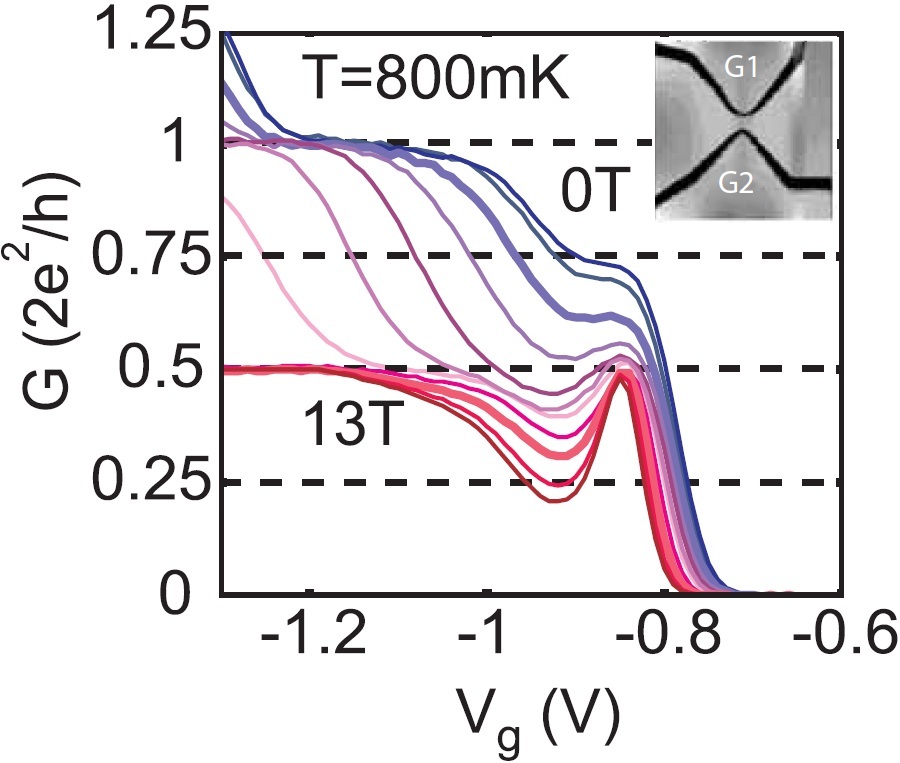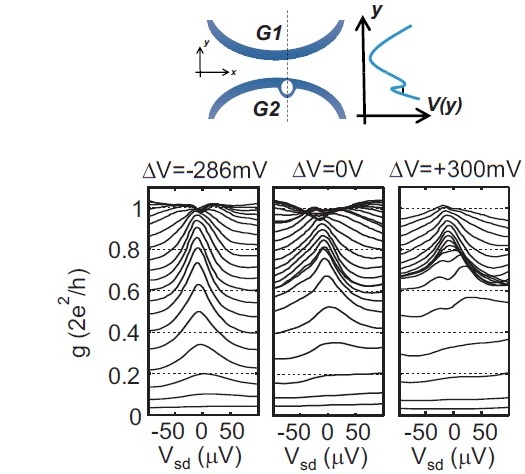0.7 Anomaly and localization
Y. Komijani, M. Csontos, I. Shorubalko, T. Ihn, K. Ensslin, Y. Meir, D. Reuter, A. D. Wieck, Evidence for localization and 0.7 anomaly in hole quantum point contacts, Europhys. Lett. 91, 67010 (2010).

- Quantm point contacts (QPCs) show conductance quantization in units of 2e^2/h, one of the manifestation of the quantum mechanics.
- There has been a small plateau at about 0.7x2e^2/h known as 0.7 anomaly, which is thought to be due to many-body interactions.
- Miklos and I discovered that if we apply a magnetic field B perpendicular to the electronic plane, the 0.7 plateau transforms to a conductance suppression reminiscent of Coulomb blockade. Of course we had to subtract the effect of Shubnikov-de Haas oscillations in the leads very carefully. More on this, in the paper and my PhD thesis.
- This gave a strong evidence that the 0.7 anomaly is caused by a dynamical trapping of an electron in the QPC, its Coloumb blocking of the current, and the consequent Kondo screening.

Possible two-impurity Kondo physics
Y. Komijani, M. Csontos, T. Ihn, K. Ensslin, Y. Meir, D. Reuter, A. D. Wieck, Origins of conductance anomalies in a p-type GaAs point contact, Phys. Rev. B 87, 245406 (2013).

- We study linear conductance of a QPC as a function of temperautre and magnetic field. Moreover, we use an asymmetric voltage on the two gates G1 and G2 to shift around the conduction channel in the transverse direction. Using these, we establish that there is an potential impurity near the G2 channel that can be filled or emptied by an electron depending on gate voltage configutation.
- The bottom figure shows differential conductance through a QPC as the plunger gate is varied from low-conductance to high-conductance. The left-bottom panel is when we use the transverse Electric field to push the channel towards G1. In this case, we have a clean zero-bias anomaly (ZBA) which is interpreted as the signature of the Kondo effect from the 0.7 anomaly.
- As we go to positive Electric field (lower-right panel), the channel is pushed toward G2, which hosts a charge trap impurity. In this case, ZBA splits to two, but this splitting disappears when the channel becomes more conductive (more positive value of gate voltages).
- This splitting is interpreted, as due to two-impurity Kondo effect. When there is an electron in the charge trap, it behaves as a spin and it combines with the electron dynamically trapped by the 0.7 anomaly to form peak splitting.